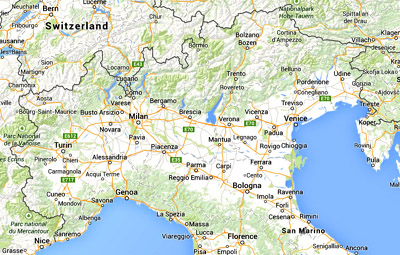 |
|
|||
"THOMAS TUNALLI, MERCHANT OF MILAN" (based on demographic, geographic and other supporting data as detailed on this website) |
||||
See also: THE TUNALEYS'ITALIAN ANCESTOR-"THOMAS TUNALLI" BACKGROUND TO THOMAS'S NAME CHANGE MARY TUNALEY, THOMAS HADEN, MISS JANE AUSTEN, JAMES MCNEILL WHISTLER
Original records more recently discovered by the author offer a more detailed insight into how the Tunaley name came about around the time of the John Lombe mill construction, completed 1721. Click here for the latest information updates. ____________________________________________________
Records show a population of "Tunali"s in Switzerland ; across the border in Milan the number of families with the name "Tonali" is numerous. Significantly the names "Tunali" and "Tonali" together with similarly spelt names are concentrated disproportionately in this area rather than dispersed randomly throughout Italy. This demographic feature is sufficiently pronounced that the one logical explanation for such population distribution is that these families migrated into the area from abroad in relatively "recent" (i.e. post- medieval) times. The current Tunaley population distribution echoes this demographic feature. Along with the geographical details, as given below, one can be reasonably confident that, in terms of work, the original Thomas Tunaley came from Lombardy, either Milan itself or from that area up to Como and the nearby Swiss border.
into the Adriatic at the Po delta just south of Venice. The river itself is navigable from the delta up to Pavia just south of Milan. Como, at one time the centre of Italy's silk industry, lies close to the Swiss border and is fully transport-linked to Milan by a network of navigable canals designed by Da Vinci.
Google Map of Northern Italy and border with Switzerland- click on map to enlarge
River, Milan is practically connected to the Adriatic Sea via these channels." most important tributaries of the Po river " few kilometres upstream of Cremona. It is 313 kilometres (194 mi) long." One important point here is that the mulberry and silkworm farms were uniqely established on the banks of the Ticino and Adda rivers.
with 5447 looms and 8000 workers and raw silk constituted 86 per cent of total exports". (Unification 1848-1871). What also seems reasonable is that, before the advent of steam power, the silk throwing mills would have been best sited in Piedmont where the non-navigable part of the Po river and its tributaries were fast-flowing. Here, the spinning mills were water driven, their design said to have been based on original Da Vinci engineering drawings. One can then assume that the raw silk was produced in Lombardy, sent over land to Piedmont for processing, then returned to Milan where the yarn was traded for export with silk merchants. (It was in Piedmont that John Lombe conducted his industrial espionage, obtaining employment at one of the Italian mills where the silk-throwing machinery was used and, over a period of time, creating detailed drawings of the machinery which he secretly brought back to Derby, 1716. It was also around this time that Thomas "Tunalli", later to become Thomas Tunaley, was born. Whilst Thomas's exact year of birth is not known, we do know from a notice in the Derby Mercury that he died 20 August 1795, aged "upwards of 80 years." ) entrepreneurs in the populous towns of Northern Italy".
For further information, including population statistics, email to: phtunaley@live.com
Investigations into Origins of the Tunaley Name Origins of the Tunaley Name - The Tunali/Tonali Possbility Thomas Tunaley, the Feltmaker, and the Early Tunaleys The Early Tunaleys and A Timeline Huguenot Connection to the Silk Mill Phil Tunaley. |
||||

